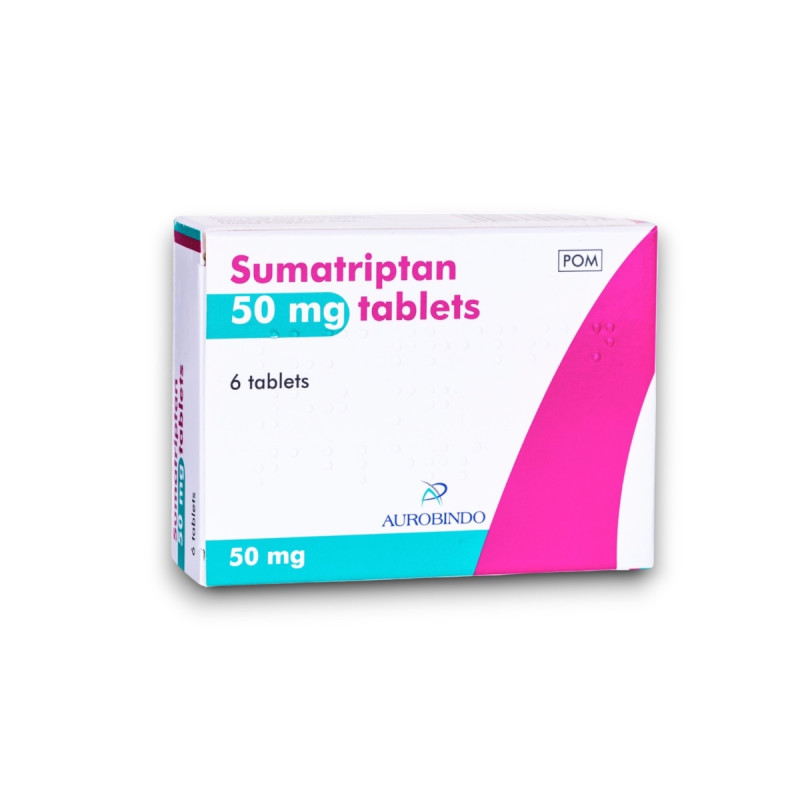
Sumatriptan is a medication used to relieve migraines and cluster headaches. It is most effective when taken at the start of pain but does not prevent migraines or cluster headaches from occurring.
Click below to view patient information for this medicine.
View Patient InformationSumatriptan is a serotonin (5-HT1) agonist that targets receptors on blood vessels and nerve endings in the brain.
It is believed to alleviate migraine and cluster headache pain through three main mechanisms:
Blood vessel constriction: Migraines and cluster headaches can be partly caused by the dilation (widening) of blood vessels. Sumatriptan narrows these vessels, helping to reduce pain.
Inhibition of neuropeptide release: The medication prevents the release of neuropeptides that would otherwise cause vessel dilation, thereby decreasing pain linked to widened blood vessels.
Reduction of pain signal transmission: Sumatriptan decreases the transmission of pain signals along the brain's nerves, minimizing the perception of pain during a migraine or cluster headache.
Sumatriptan is available in various forms, each of which should be used as soon as you notice the onset of a migraine or cluster headache.
Tablets: Swallow the tablets with water. If swallowing is difficult, you can break them in half. Tablets typically start working within 30 to 60 minutes.
Nasal Spray: Use a single-use nasal spray by spraying it into one nostril while keeping the other nostril closed. Breathe deeply to ensure the dose is inhaled. The nasal spray generally takes effect within 15 minutes. If the headache returns, another dose can be taken after two hours.
Injections: Migraine injections are supplied in pre-filled syringes and are usually administered into the thigh. Be sure to carefully follow the manufacturer’s instructions. The injection typically provides relief within 10 to 15 minutes.
Sumatriptan is generally safe when taken as prescribed, but there are a few important precautions to keep in mind:
Avoid driving or using machinery if you feel dizzy, drowsy, or tired after taking it.
Do not use it too frequently – overuse can cause more frequent or rebound headaches. Speak to your doctor if this occurs.
Medication Interactions
Always tell your doctor or pharmacist about any other medicines, supplements, or herbal products you are taking.
Avoid using Sumatriptan alongside:
Other migraine treatments such as ergotamine, methysergide, or other triptans
Certain antidepressants, including SSRIs, SNRIs, or MAOIs
Herbal remedies like St John’s Wort
Sumatriptan is not suitable for individuals who:
Are under 18 or over 65 years old
Have a history of stroke, angina, heart attack, or uncontrolled high blood pressure
Experience more than 10 migraine attacks per month
Have significant heart, liver, or kidney problems
Are allergic to sumatriptan succinate or any of the ingredients in the medication
|
Side Effect |
How to Manage |
|---|---|
|
Nausea or vomiting |
This may also be caused by the migraine itself. Eat small, bland meals and avoid rich or spicy foods. Stay hydrated by sipping water regularly. If you take the contraceptive pill, vomiting may affect its effectiveness—check your leaflet for advice. |
|
Dizziness or tiredness |
Rest and avoid driving or operating machinery until symptoms pass. |
|
Flushing or changes in body temperature |
Usually mild and temporary. Speak to your doctor if these symptoms persist or become bothersome. |
We've detected you are using Internet Explorer 10. This site does not support your browser version due to significant security risks. You will still be able to view our catalog but you will note be able to purchase through our site using IE10. Please upgrade your browser to IE11 or use another browser such as Google Chrome (recommended), Mozilla Firefox or Microsoft Edge. Click here for more information.